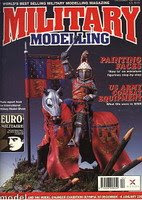
Before the German invasion of Russia in 19-11 there had been a degree of co-operation between the German and Soviet armies. In spite of the mutual hostility of their political creeds, it had suited both Hitler and Stalin to act as allies, most notably in their joint invasion of Poland. Since the early 1930s this co-operation had included the use of Soviet testing grounds to evaluate new German tank designs. German Officers had been baffled by their Soviet counterparts' refusal to believe that Germany had nothing better than what was sent for testing. The T-31 was the reason for this doubt, and it came as an enormous shock to the Germans when they first encountered Russian tank forces during Operation 'Barbarossa'. With its well-sloped armour and potent 76mm armour-piercing gun, the T-34 was more than a match for any of the German tanks. Fortunately for the German tank crews, however, it laboured under several self-inflicted disadvantages. In the first place, Stalin's purges had eliminated main of the Red Army's best tank officers, so tactics were primitive. Secondly, it had a rather unreliable transmission in its early versions and spares were in very short supply.
















































